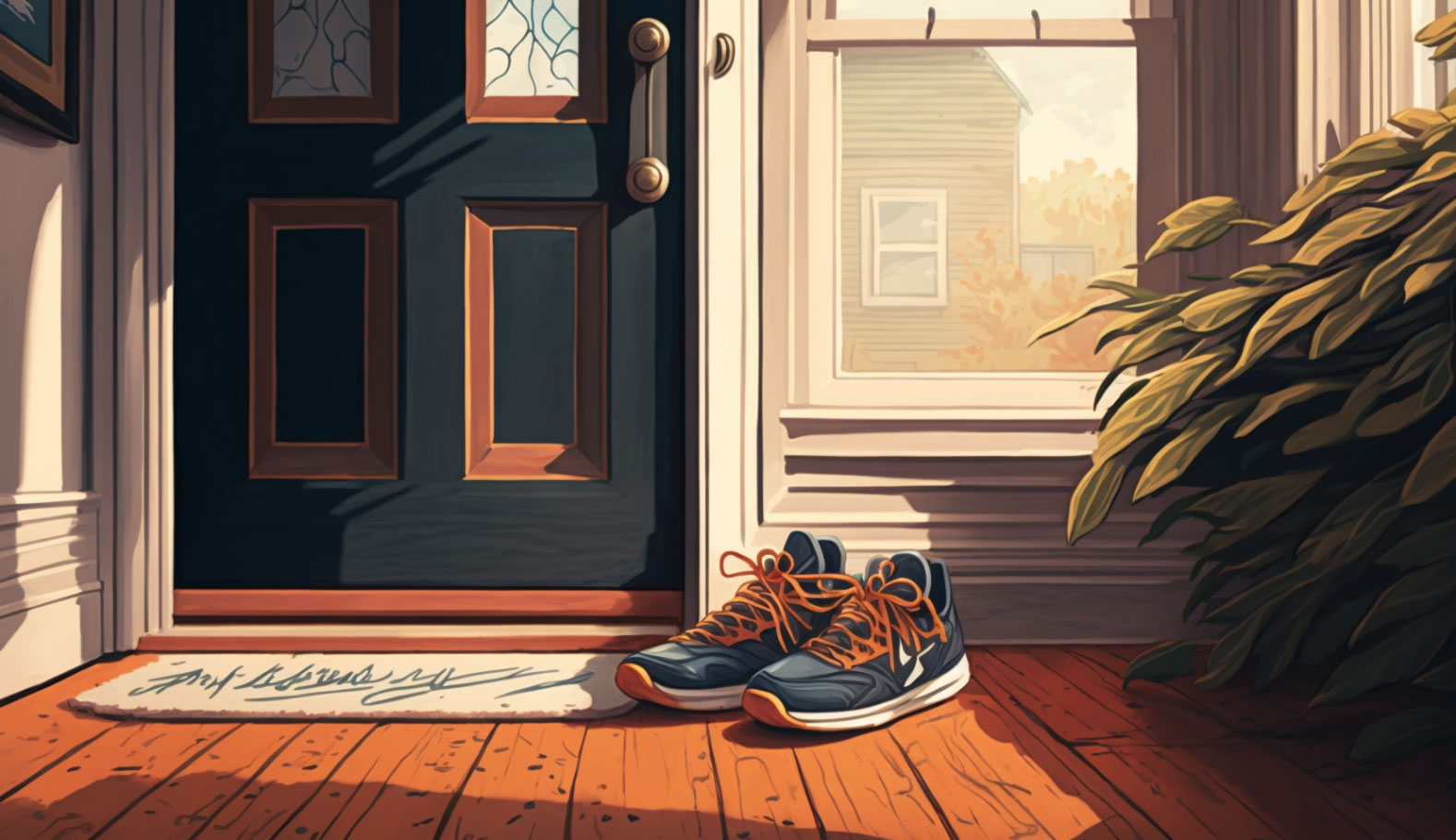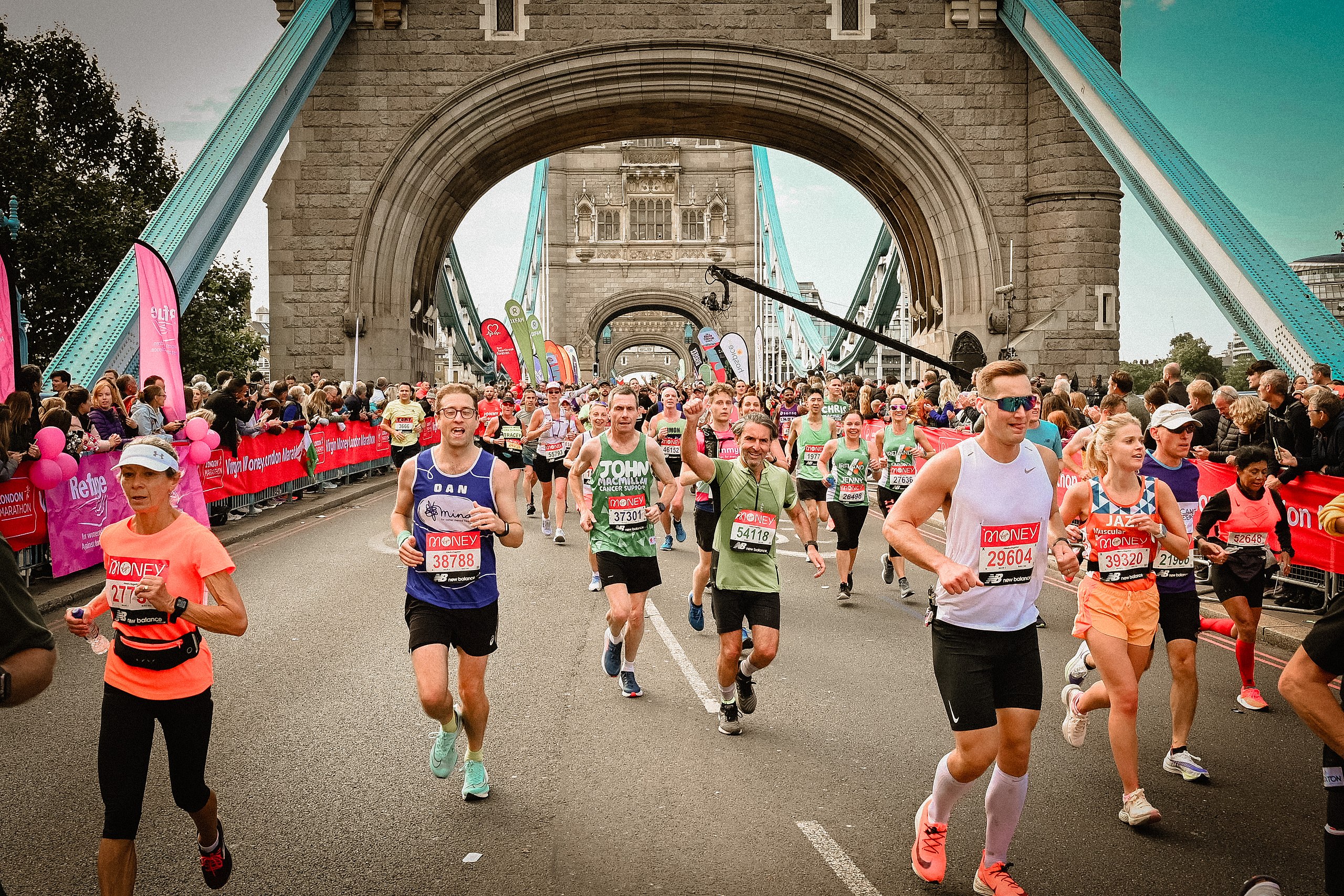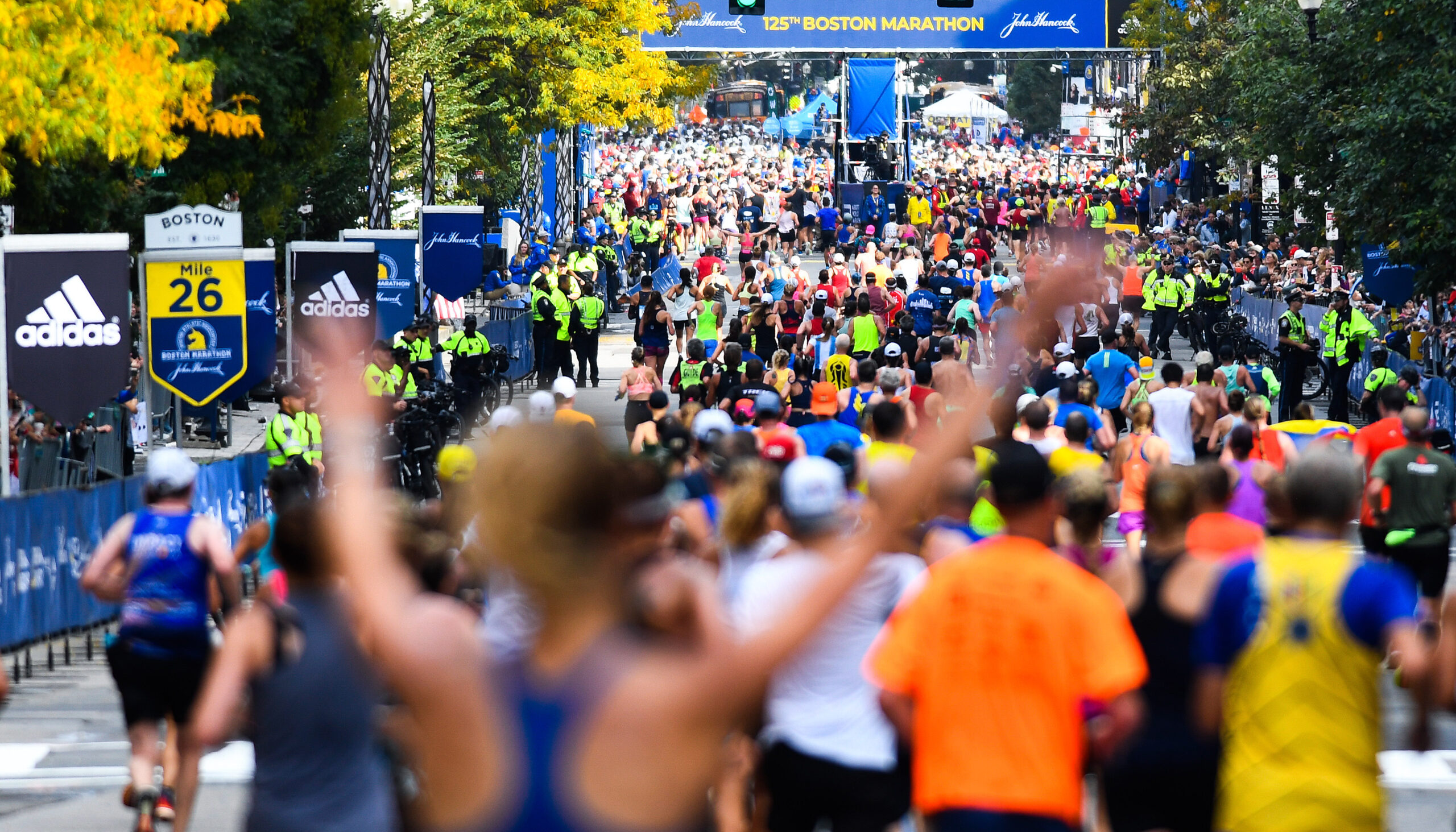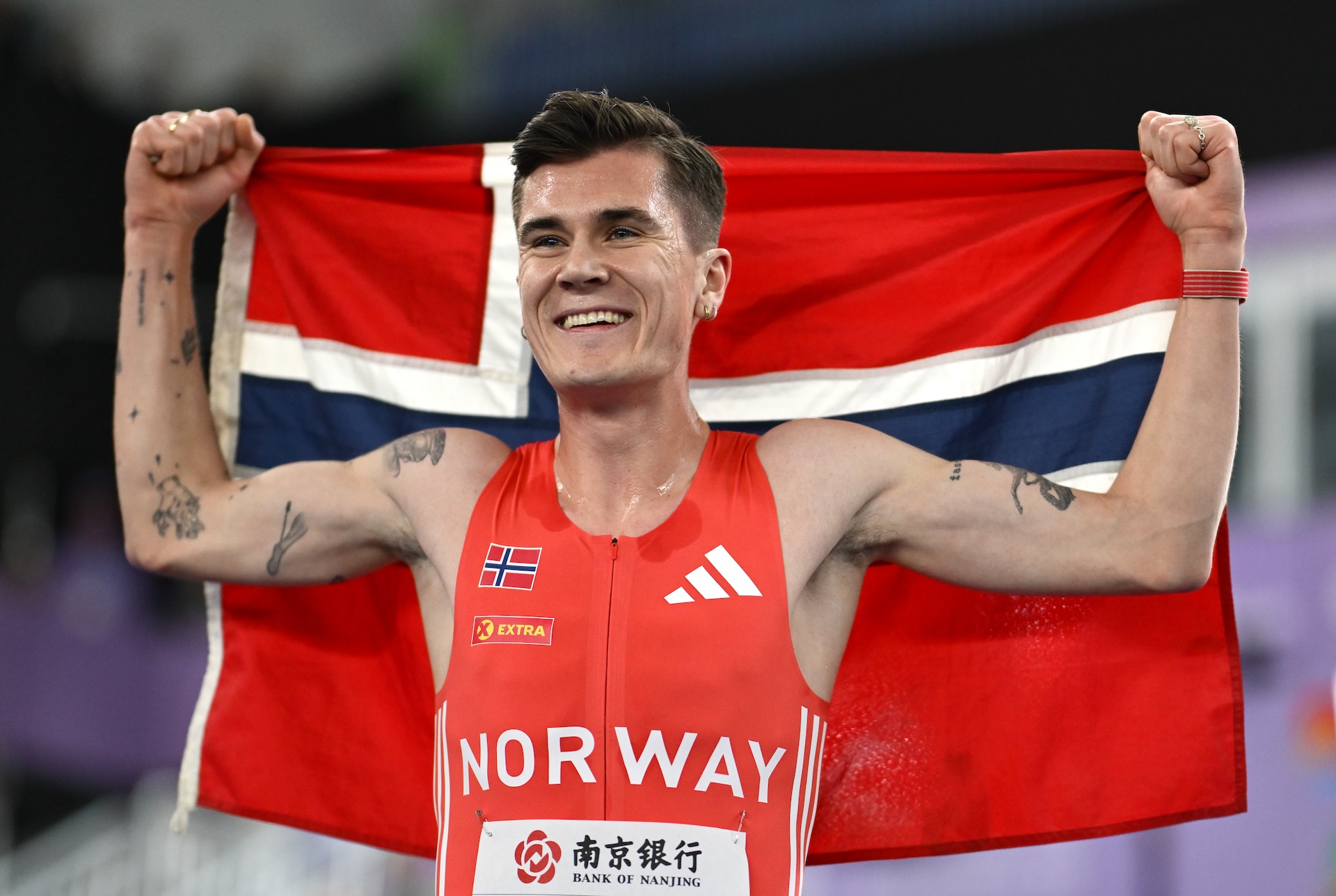Do Running Shoes Need Breaking In?

Your old running shoes have finally been replaced and you’ve decided to add to your shoe rotation, perhaps with some new daily trainers, some trail shoes, or maybe a fast pair of carbon plate supershoes, but as you tie up the laces you think to yourself: can I just go and run in these, or do I need to break in new running shoes? And how do you break in new running shoes?
There’s long been a thought that you need to ‘break in’ running shoes, but shoes have changed, and modern technology and materials mean that you should be able to take them straight out of the box and start running. However, you should take some time to get to know your new shoes.
RUNNING SHOES & YOU
Each running shoe is as different as each foot which steps into it. Our individual gait and foot shape will impact how the shoe works for us, meaning each new pair of shoes may take a little getting used to (and unfortunately some just won’t be right for us – there is no one shoe fits all when it comes to running shoes).
While the shoes may not need ‘breaking in’, they may require a few runs for you to begin to understand how they feel and fit for you, and for the foam and upper to soften to your feet. By doing that you can see if there are any ‘hot spots’ which rub and may cause blisters, or any areas which are too tight or too loose.
Check out this post to learn more about the anatomy of a running shoe.
BUT FIRST… HOW SHOULD RUNNING SHOES FIT?
The shoe should always feel good to you as soon as you try it on. If it doesn’t then consider another size or a different shoe completely.
The heel should be snug and not slip up and down, and check for whether the ankle collar rubs on your ankles. The midfoot should be comfortable, and neither too tight or loose, especially around the arch and the outside of the foot.
At the end of the shoe, you should have a thumb’s width from the end of your biggest toe, and you should be able to wiggle your toes – your big toe and little toe shouldn’t feel squeezed on either side. If you find your feet over-hanging or bulging in the toebox, then look for wide-fit shoes.
If in doubt, size up. It’s easier to find the correct fitting on a shoe that’s slightly too big, than trying to squeeze your foot into something too small. There are differently lacing techniques which can help you find the best fit for you.
And always test your shoes wearing the socks you’re most likely to run in.
WALK THEN RUN IN NEW RUNNING SHOES
While you may be impatient to run in your new shoes, you could take them for a short walk or two before you run. This will help get an idea of how they fit and feel, and how best to lace them up.
CAN I GO FOR A LONG RUN WITH NEW SHOES OUT OF THE BOX?
You could go for an out-of-the-box long run, but what if you get 30 minutes into a two hour run and realise that the shoes are rubbing, causing you to get a blister, or hurting you in some way? It’s always best to go for some shorter runs before going for a long run.
USE THE SHOE FOR ITS CORRECT PURPOSE
If you bought trail shoes, they test them on the trails; if you’ve got carbon plate running shoes, then run fast in them. Use the shoe for what it’s been designed for to get the best idea of how it fits for you.
WILL THE SHOE CHANGE AS I RUN IN IT?
If you’ve got an old pair of shoes then tturn them over and look at the outsole. Can you see areas that have worn down more than others? Now take out the insole and see where it’s more compressed – it will have shaped to your foot as you’ve run in it.
Checking these two things will give you an idea of how your foot lands when you run, and also of how the shoe changes as you wear it.
Sometimes a shoe feels softer after a few runs. Some may consider this the ‘breaking in’ of the shoe, especially running shoes with firmer midsoles and outsoles (like trail shoes), but that’s more a consequence or using it rather than an action you have to take to get the shoe to work properly.
The opposite of this softening will be true when a shoe gets older: it’ll feel firmer and ‘flat’ as if it’s lost all it’s cushioning – now’s a good time to replace those shoes.
NEW PAIRS OF OLD FAVOURITE RUNNING SHOES
If you’ve found a shoe that works well for you then you might buy another pair. When you put them on for the first time, they will likely feel different to the old ones, and that’s because on the old pair the upper has become looser, the midsole foam has compressed, and the insole has become moulded to your feet over the miles you’ve run in them. If you know that the shoe works, then the new ones will soon begin to feel just like the last pair.
DO I NEED TO ROTATE MY RUNNING SHOES?
Rotating your running shoes means that you select from different pairs and use them for different runs, so you might have trail shoes for the trails, daily trainers for the easy runs, and tempo shoes for workouts. You don’t need to have all of them, but research suggests that having a few different pairs can be good for overall foot strength – assuming the shoes fit you well.
If you only ever wear the same pair of shoes then your foot gets used to one particular shape of shoe and that can cause weaknesses in certain areas of your legs and feet. That’s probably fine if you only run short distances a couple of times a week (and wear other shoes the rest of the time), but if you run regularly then it’s good to have variety in your shoes.
RUNNING IN CARBON PLATE SUPERSHOES
Carbon plate shoes are designed to be used for fewer miles overall compared to other shoes (at least to maximise their top performance, anyway), so many runners like to minimise their use in them. If you have a new pair of carbon plate shoes then it’s good to go for a shorter faster run in them (perhaps a 5km tempo), and then also test them as if you’re racing in them. For example, you should try a long run ahead of a marathon as it’s always better to find out if a shoe rubs or causes discomfort before a race rather then during it.
IS IT NORMAL FOR NEW RUNNING SHOES TO HURT YOUR FEET?
No, that’s not normal, and it’s probably not good news. If shoes hurt when you wear them, then that may not improve, especially if you feel more serious niggles like tightness or discomfort in the achilles or your plantar fascia.
If you feel pain, then the shoe is not right for you and you should try a different size or brand. It’s important to only run in shoes which work for your particular feet and running style. Running shoes should feel comfortable on your feet.
WHAT TO DO IF A RUNNING SHOE RUBS?
We talk about ‘hot spots’ on running shoes as being an area where you feel rubbing on your feet. This could be anywhere around the heel collar, under the laces, on the sides of the feet, or the toes.
There are different ways to lace your shoes which can help. You could try a ‘runner’s knot’ which uses the extra eyelets at the top of the shoe to stop the heel slipping, or you can re-lace the shoes and skip the lowest two holes to help give some extra width in the toebox.
WHAT TO DO IF A PAIR OF SHOES JUST DON’T WORK FOR YOU?
This has happened to many of us: we’ve tried a shoe on and it’s comfortable, so we buy it and take it out on a few runs. But we come to realise that the shoe just doesn’t work for us. Some brands (assuming you’ve bought them direct from the brand) accept worn shoes as long as it’s still within the typical return period, so check the return policy. Otherwise you may want to consider selling them on a site like Ebay or Vinted.
WHEN SHOULD YOU REPLACE OLD RUNNING SHOES?
There’s no single answer to this question, though you should hope that a good pair of trainers will be used for at least 300 miles (500 kilometres), and ideally much more. And there’s no reason why you can’t get more than 600 miles (1,000 kilometres) if the shoe is still comfortable.
But there are signs to look out for in your shoes which may mean it’s time for a new pair: if they begin to fray or wear through in the upper and can’t be repaired; if the outsole grip is worn down to the midsole; if you begin to feel discomfort in the shoe, or if they no longer provide enough support or cushioning.
But don’t just chuck them away, especially if you can still get a few more miles out of them. It’s always handy to semi-retire older shoes and keep them around for days when it’s raining and you don’t want to get your nice new shoes wet.
***
Is there anything you do when buying a new pair of trainers?


























Running News
Ingebrigtsen Stars at World Athletics Indoor Championships 2025 – Plus All The Winners!
Sam Ruthe Is First 15-Year-Old To Run A Four-Minute Mile!
Eliud Kipchoge Will Run The 2025 Sydney Marathon!